This 1930 Harley Davidson V is said to be a true barn find. It was apparently rescued from a barn around twenty years ago and put back on the road. It can be found here on eBay with a current bid of $30,500. Currently residing in Colorado Springs, Colorado, this bike is surely waiting for the first sign of spring to hit the road again. The new owner will have a fun project that they can ride and enjoy, or it will be a great starting point for a restoration.
The history of this bike is a little fuzzy to me. The ad uses the phrases “authentic survivor”, “solid barn find”, “as-found patina” and “overhauled mechanically”, but it’s hard to tell if those are accurate in this case. Certainly, this is a nice bike. No argument there. But is it a true barn find survivor with original patina? I guess the new owner will have to be the final judge of that. You will certainly get attention and lots of thumbs up cruising it up and down the road.
The engine looks original for the most part. The ad states it is a 1200cc side-valve V-twin with aluminum pistons and an enclosed valve train. A big part of the value of early engines like this are the heads, specifically the cooling fins. After 80+ years, some fins are usually broken off and are nearly impossible to fix to look original. Original equipment heads that are undamaged are very rare and expensive. This engine appears to have some minor breakage on the fins, but is said to be mechanically sound and the seller claims it starts effortlessly.
While the bike has a lot of original parts, you can see some aftermarket customizations in this picture. I don’t think dice were an original option in 1930. You have to love all the mechanical features of vehicles from this vintage. For the most part, they are free of electronics and only require basic hand tools to work on a majority of the bike. What would you do with this bike? Drive it as is? A light restoration back to factory specs? Perhaps a full nut and bolt restoration back to original? Any road the new owner chooses is certainly to get off to a great start with this bike.





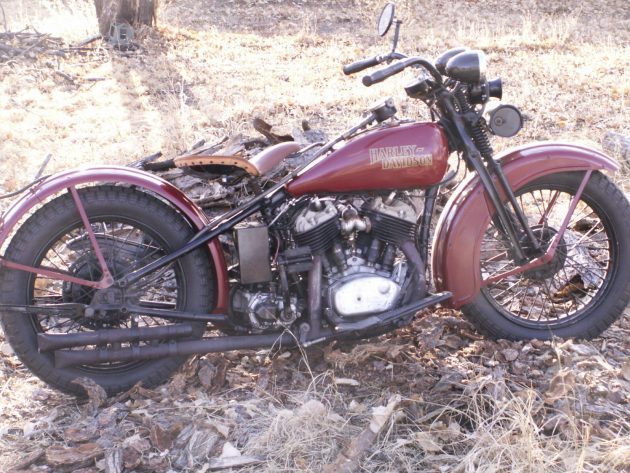
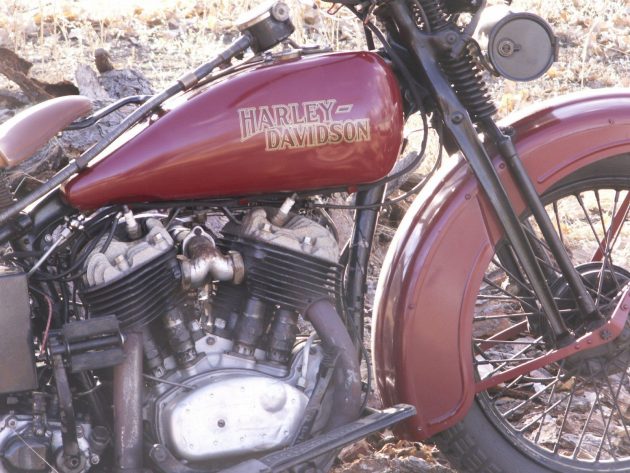


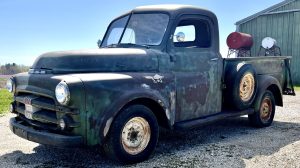
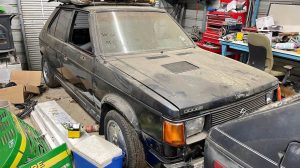
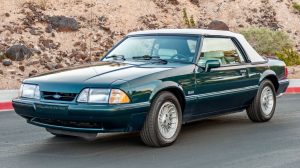
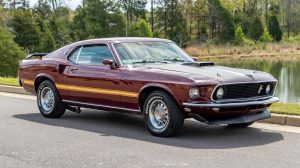


Thanks for the listing!
yes, strip off the ‘personalized’ items, cut an alu scrap & weld on to shape up the head, etc.
Luv any ‘springer’ frnt end but…
I sure don’t have 30K$ for a neat ol bike
Ride it as is. Do nothing to it except keep it running and clean it.
These are not very comfortable, but man are they fun to ride.
Definitely a Sunday Cruiser. I love me a suicide clutch.
You had nest be a true hard a.. to ride one of these, and have lots of oil for these leakers.
Every pebble is felt on sciatic nerve, and hands go Knumb from vibrations. Says stock but, my mind goes back 60 years, there are somethings not right, IMO.
I wrenched on mine right down to full rebuild, continuously, and while lots of useable parts out there there are lots more not original knock offs.
THIS PRICE? ONLY TO DIEHARD HARLEY FANS.
Got to agree, lots of little things on this are out of place. It’s for riding and not showing.
Then again, when you get old enough to afford this maybe it is also old enough to not be able to get off after riding.
Still remember having friends lift me off of a borrowed Norton after a ride. Convinced me to get my hips replaced.
Love it! I’ve wanted one of these all my life. Unfortunately it’s way out of my budget so someone else will have to be the lucky new owner. Interesting engine. It used a ‘Total-Loss’ lube system. It pumped oil into the crankcase and it stayed there until it was used up. There was a way of calibrating it so you always had 1 to 2 cups of oil in the crankcase. Too many owners got nervous about not having enough oil so they would open the tap right up. Consequently they were notorious oil burners. Another whammy was that if you had too much oil, you risked burning out the bottom end because too much oil could cause the rollers to skid instead of roll.
like he said!
So we’ve got the wheels, tires, seat, and paint which all point to a (fairly) recent restoration. And we’ve got a slightly crusty flathead motor.
My assumption: Less than 20 years ago, someone with not-super-deep-pockets restored this bike. Hasn’t been run since.
This scoot is rad, but it’s far from original.
So we all talk about what a neat bike this is, and it is, but who here is going to shell out this kind of money for something that more than likely going to sit in a garage. I watch American Pickers, and these guys go ape over these bikes, and dole out huge sums of cash ( with their unlimited Hollywood budget which fuels this kind of alleged value) but they always get these from people who have several of these, just sitting. I just don’t see tens of thousands of dollars worth of useful machine here. There’s a reason they are never driven, they are a pain to drive. Ever ride a hardtail? Not with my 63 year old back. I’d think the novelty would ( and does) wear off pretty quick. This coming from a poor old biker, who loves his cushy GoldWing.( that is useful transportation that cost me $1,400 bucks) Maybe if I didn’t know what to do with my millions, perhaps it’s justified, just not in the world I live in, and I guess that goes for the entire old car hobby today,,for that matter.
Cool old bike, but I was wondering about that second tail pipe, Just for looks?
Just a guess darrun, it might be a tube with a screw off cap to hold the registration. I have seen many different styles, nothing this long though.
It’s a balance tube to increase the exhaust pipe volume. A cheap ‘dual exhaust’
Check the prices/value of antique motorcycles. There is a definite following. Like antique cars they are impractical to drive, I know cause I have a 1928 car that runs and drives as it did but i’m afraid to take it out in modern traffic. Mark my words, these old bikes will only go up in value. Good investments.
Attended a farm sale not that long ago,the star of the show was a 50’s Harley dresser. Totally original condition, lots of miles,overall rough and dirty but still running and ride ready. Brought 30-k,guaranteed new owner. That same week I watched the exact same bike cross the block on T V on a big Vegas auction,100 point restoration,absolutely perfect in every way. Looked like a real sale at 25-k.
that 30,500 dollar price is not a bid, but a “buy it now” price, I owned a 1936 VLH 80″ but back years ago, I paid 300 bucks for it, with the lower end completely redone. a lot of chrome bits, but that was in the 70’s and frankly there wasn’t much interest in the VL series bikes. Parts are probably easier to find today, than they were back then, thanks to repro companies. by the way, the oiling system was a total loss oiling system, one side of the tanks held fuel and the other held oil, with a hand pump on the oil side. And the heads were cast iron. Mine had a nifty pressure release threaded valve for each head that screwed in. thanks though Barnfinds, if you just featured motorcycles I would be perfectly happy!!!
The ‘pressure release threaded valves ‘ in the heads would have been priming cups. On a very cold start the rider would put a little gasoline in the cups, then unscrew them to let the fuel directly into the cylinders, screw them back shut and begin the starting procedure. Some cars had them, too.
Some bikes had a syringe-type thing (with leather seal) built into the bottom of the gas cap making it easy to draw a little fuel for the priming cups
@Jose Delgadillo: excellent description of the clutch mechanism options. I’ve owned and ridden plenty of rocker clutches but not aware of any American manufacturers who made a suicide clutch (as you’ve accurately described—those were aftermarket modifications.) A true rocker clutch is one of the coolest, most controllable ever. It drives me crazy, too, when people don’t understand.
First thing I’d do is fit it with a “mousetrap” and hand clutch lever. They don’t call the originals Suicide Clutches for no reason !
I had a ’52 as my only motorized transportation for two years in college. Leaked oil for sure. Hardtail was hard on my tail, but on city streets it was not bad. Not a great thing to start after it had sat for a few weeks. It had a magneto, which I did not understand then, or now. But it was fun on a nice day. Bought and sold it for $150 and only put a new battery in it (and lots of oil).
It’s a driver quality bike, no doubt and needs to stay that way! If I wanted to buy a piece of art that you can’t do much with other than sit and look at it, there’s far better investments out there.
These bikes had a foot operated clutch rocker pedal. It was not spring loaded. The pedal would remain in whatever position that it was set. This was to allow the rider to slip the clutch and keep it partially engaged for slow speed maneuvering. Old time riders refer to this as “keeping it in the grey area.” At a stop the clutch could be left completely depressed and not engaged. The “mousetrap” was a spring assist to lower the clutch lever force needed to dis engage it. A “Jockey shift” was a modified shifter attached directly to the shift drum, a ratchet top drum was used. The tank linkage was removed. The clutch pedal was a direct spring loaded mechanism and these were called “suicide” clutches, for obvious reasons. Mostly found on bobbers and choppers. The original control set ups allowed for good control while driving in traffic. These bikes were used by old time motorcycle cops who had to handle slow speed congested traffic conditions.